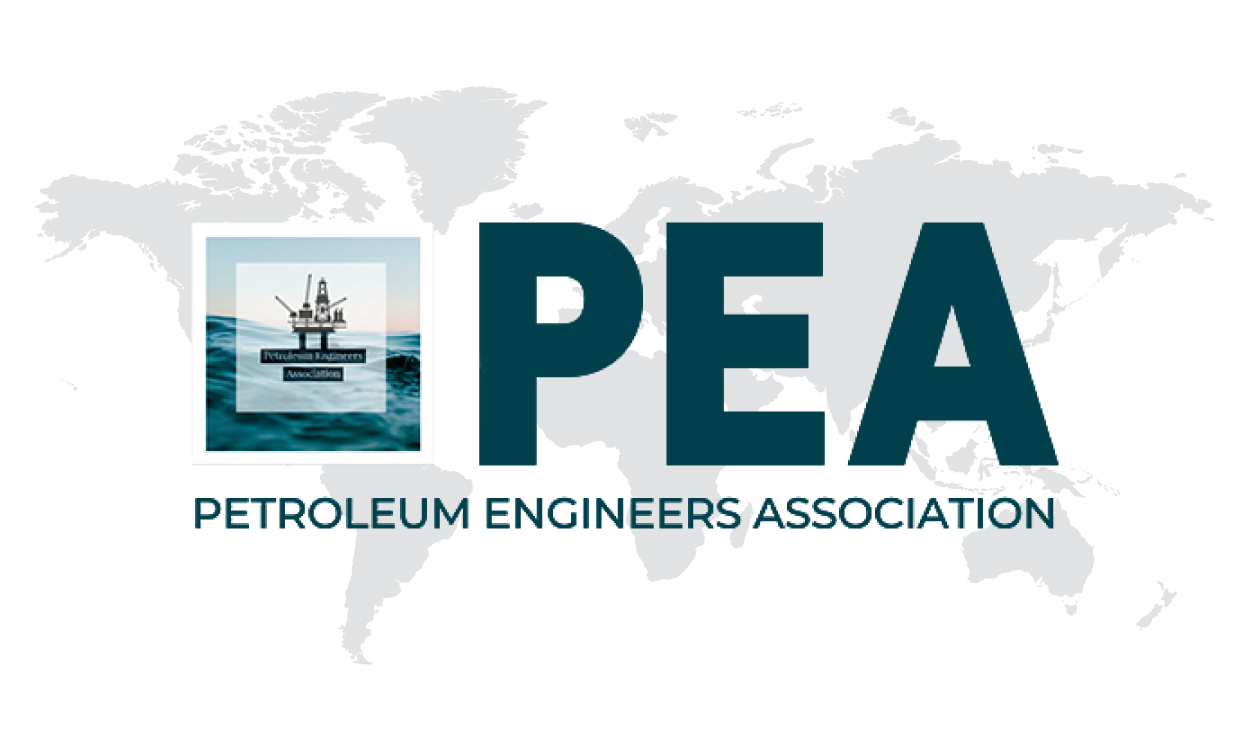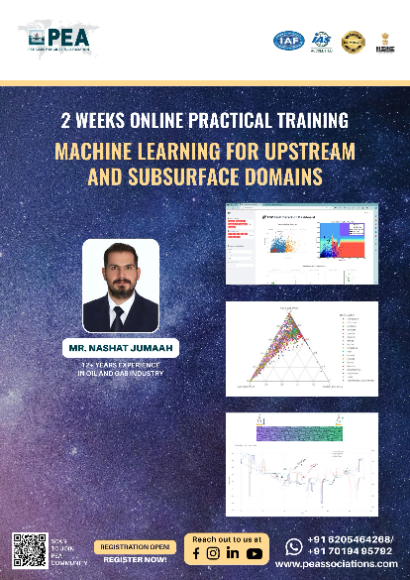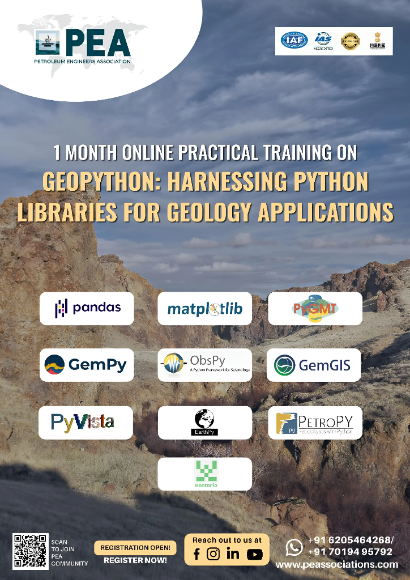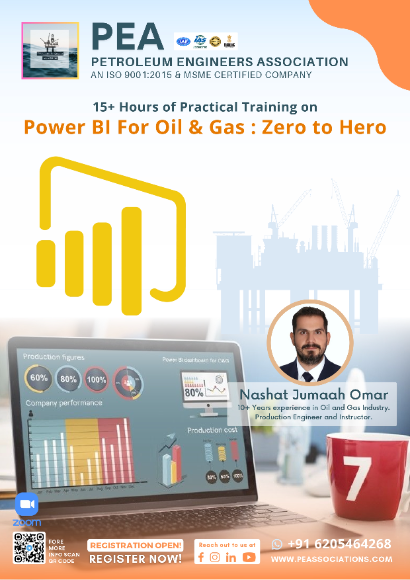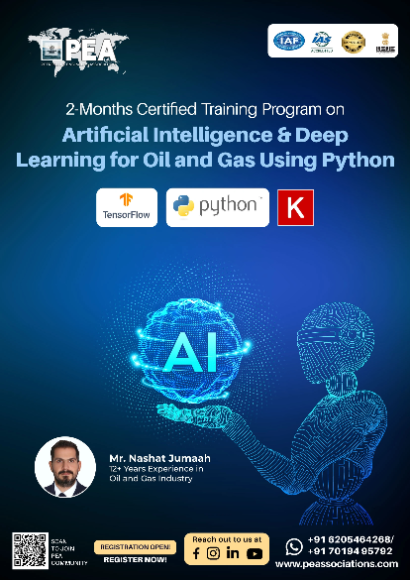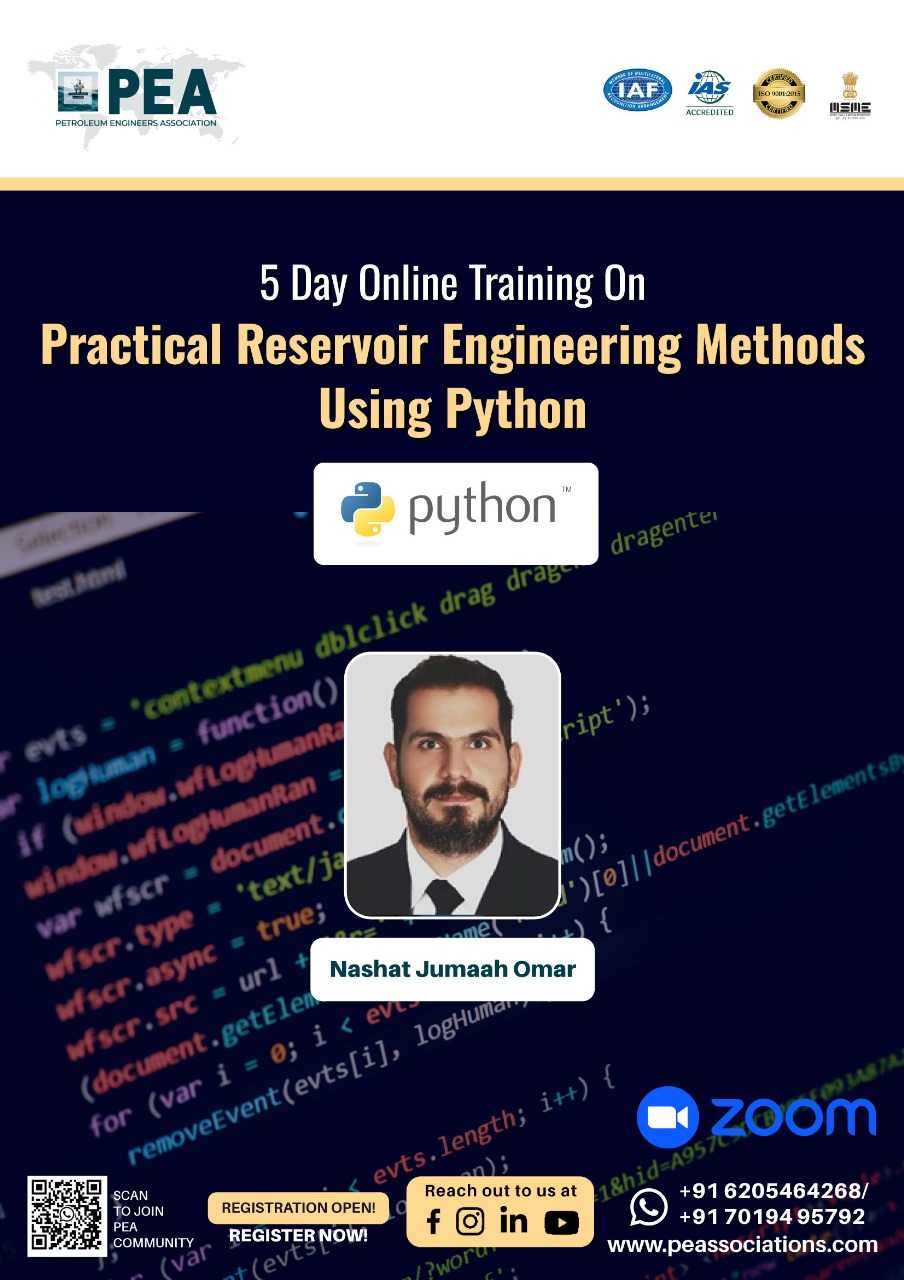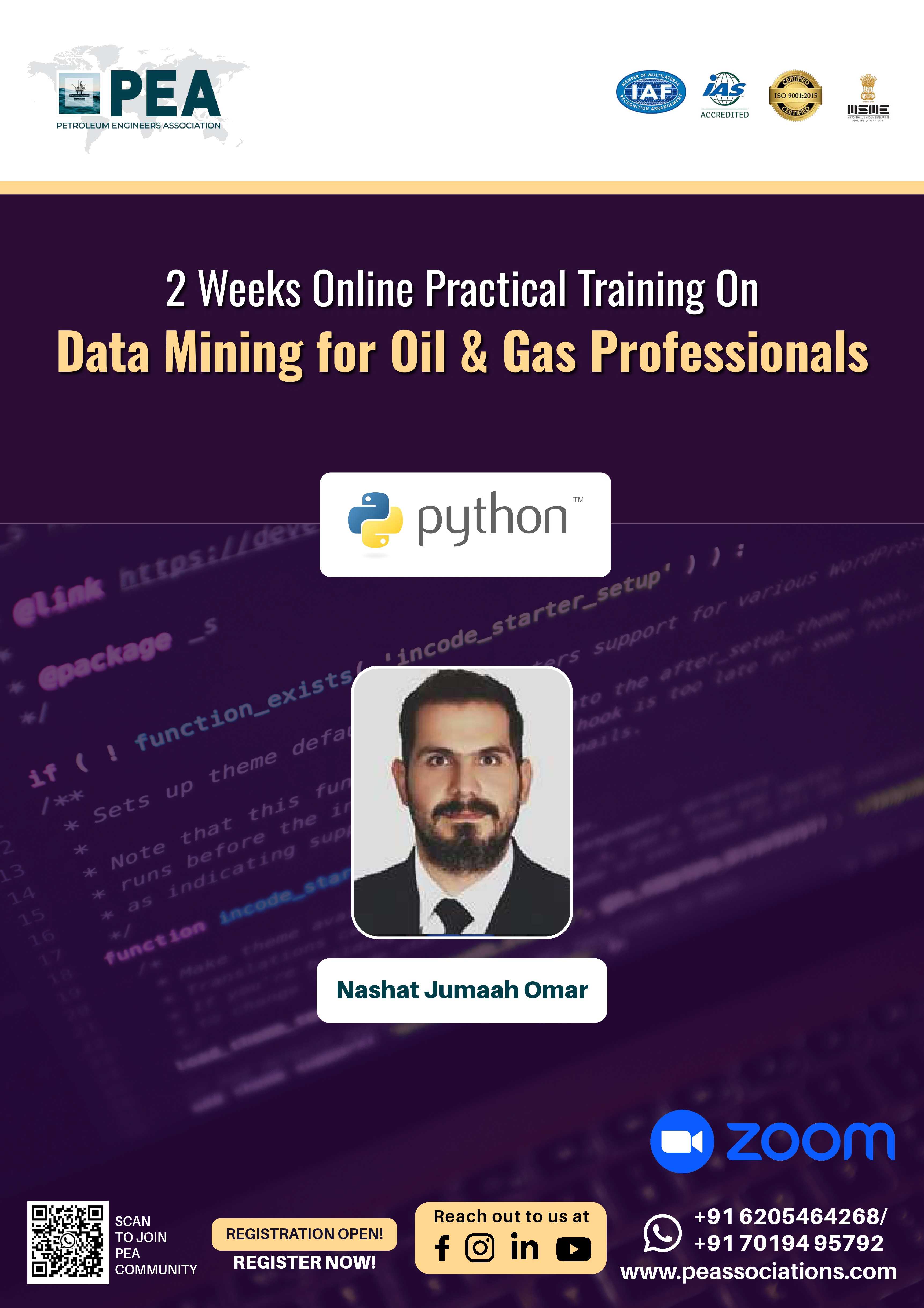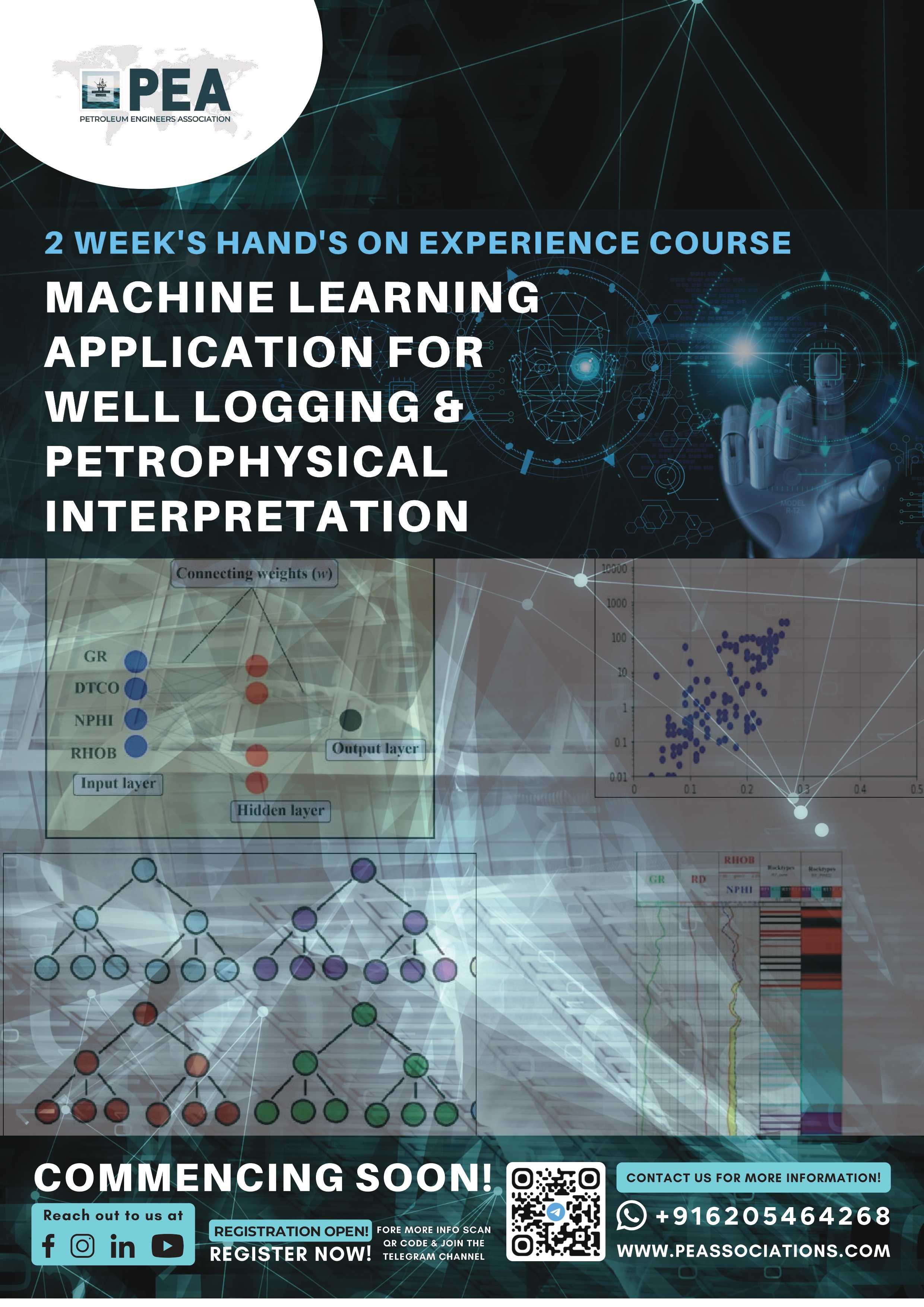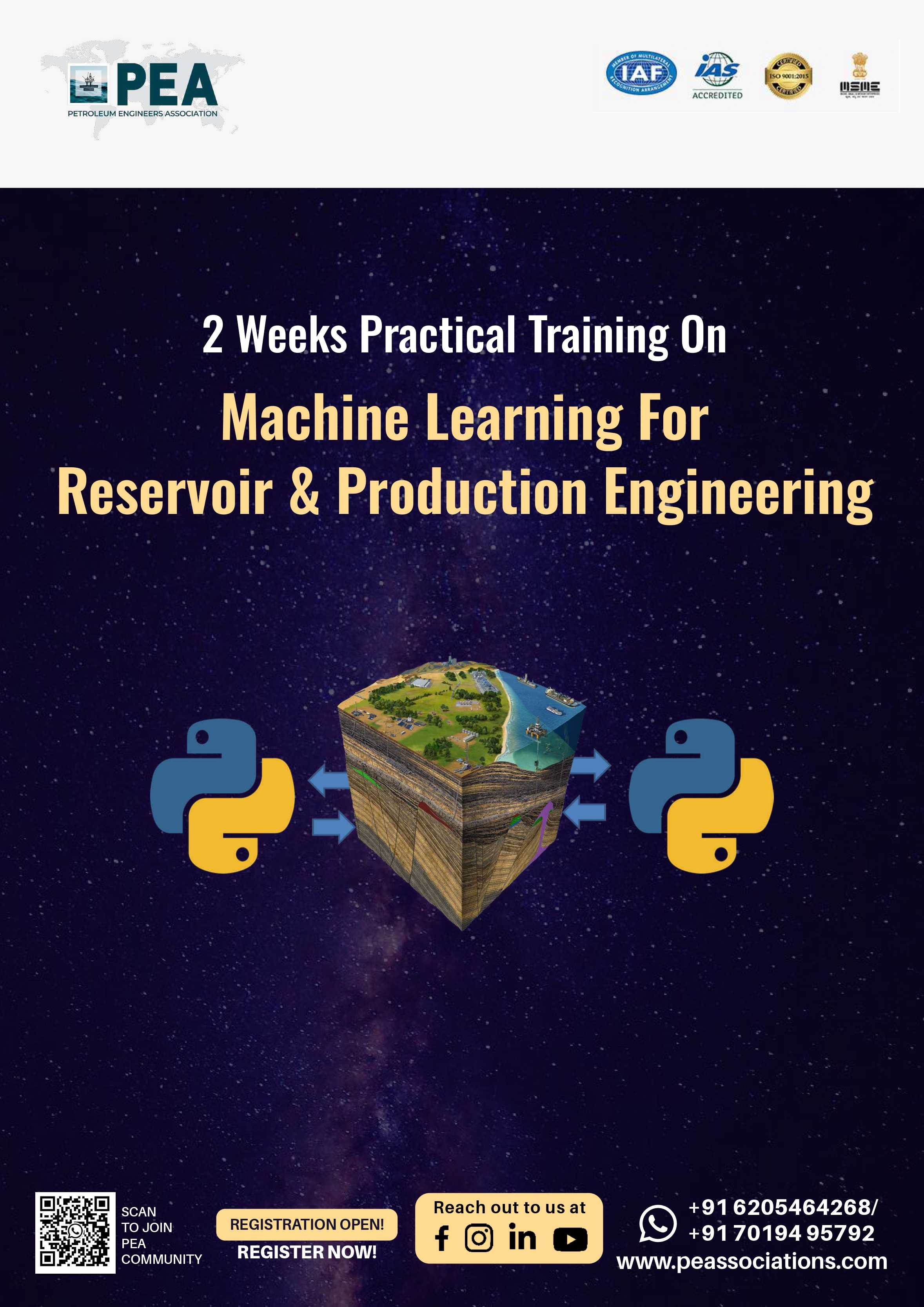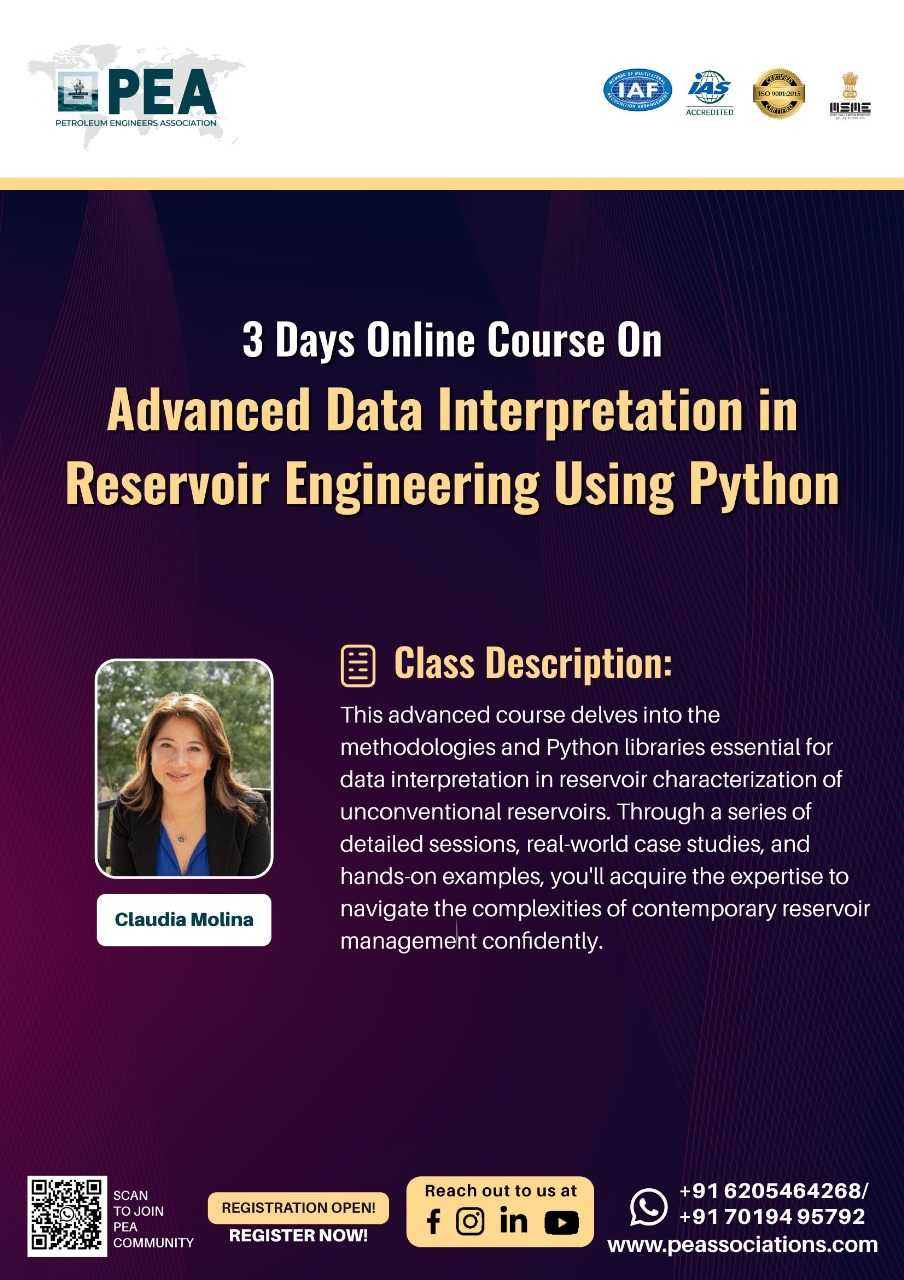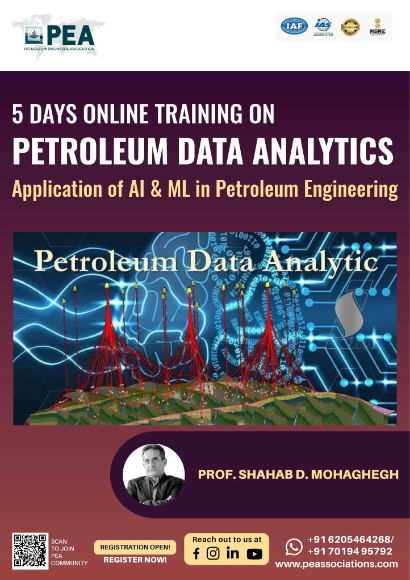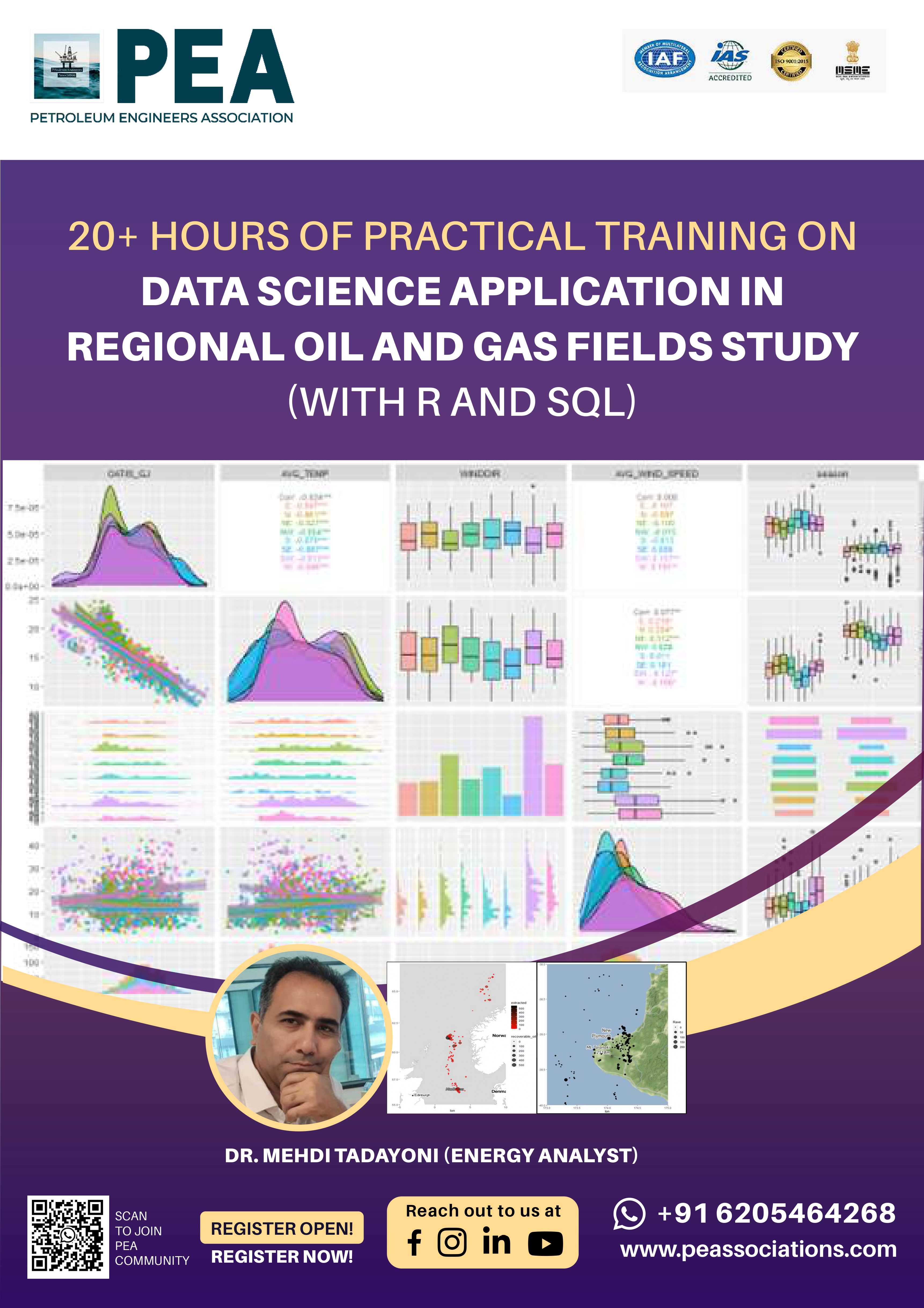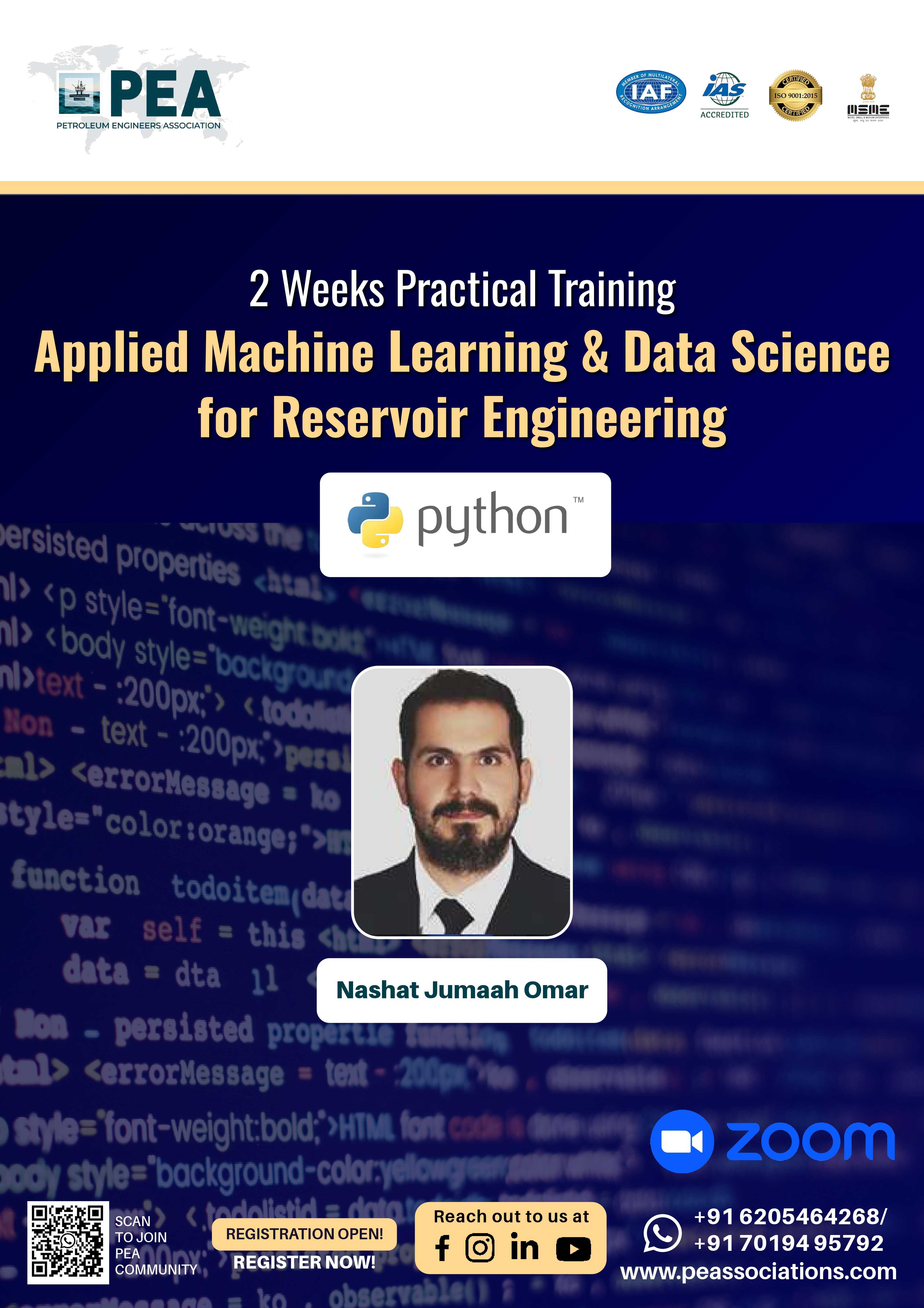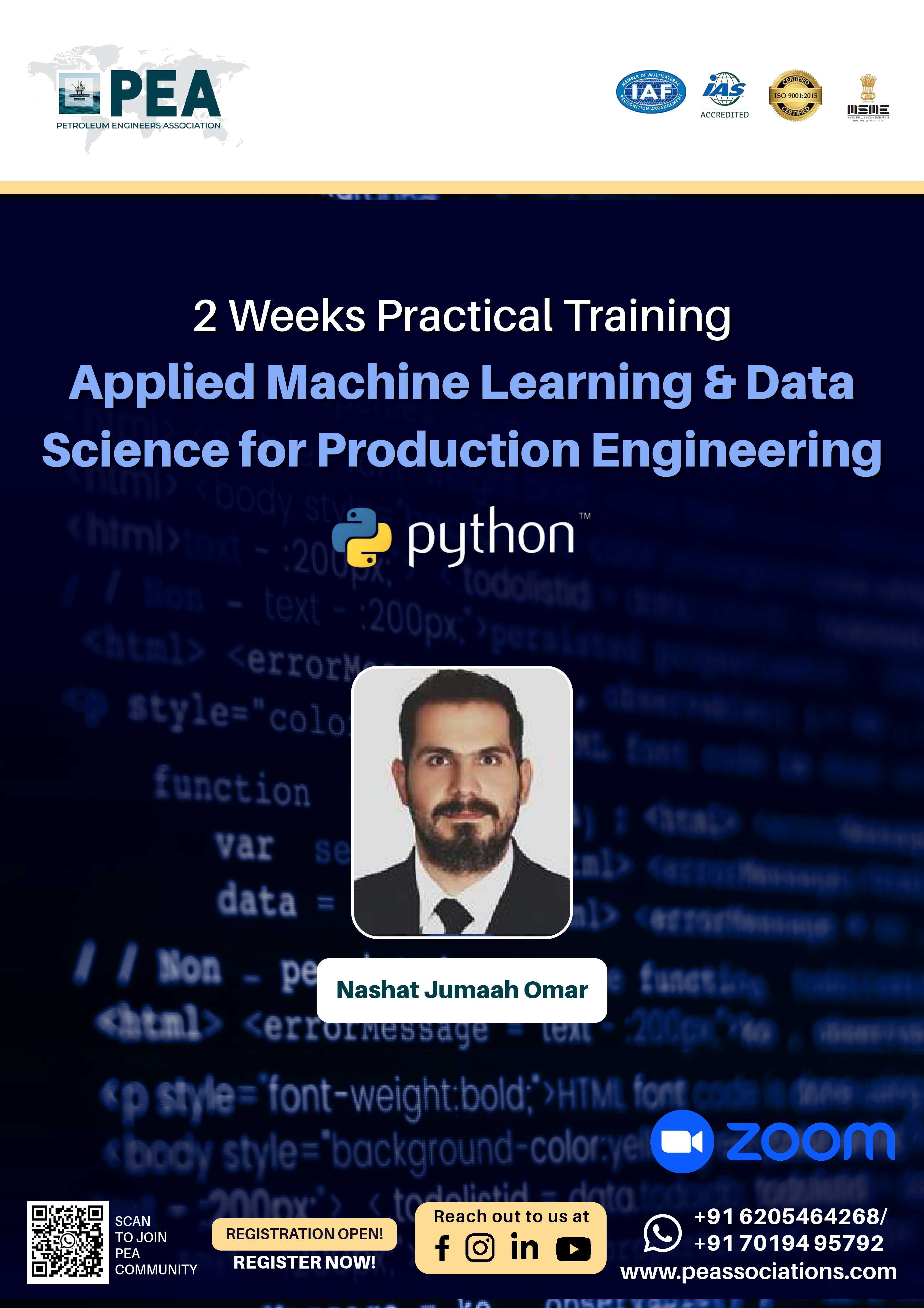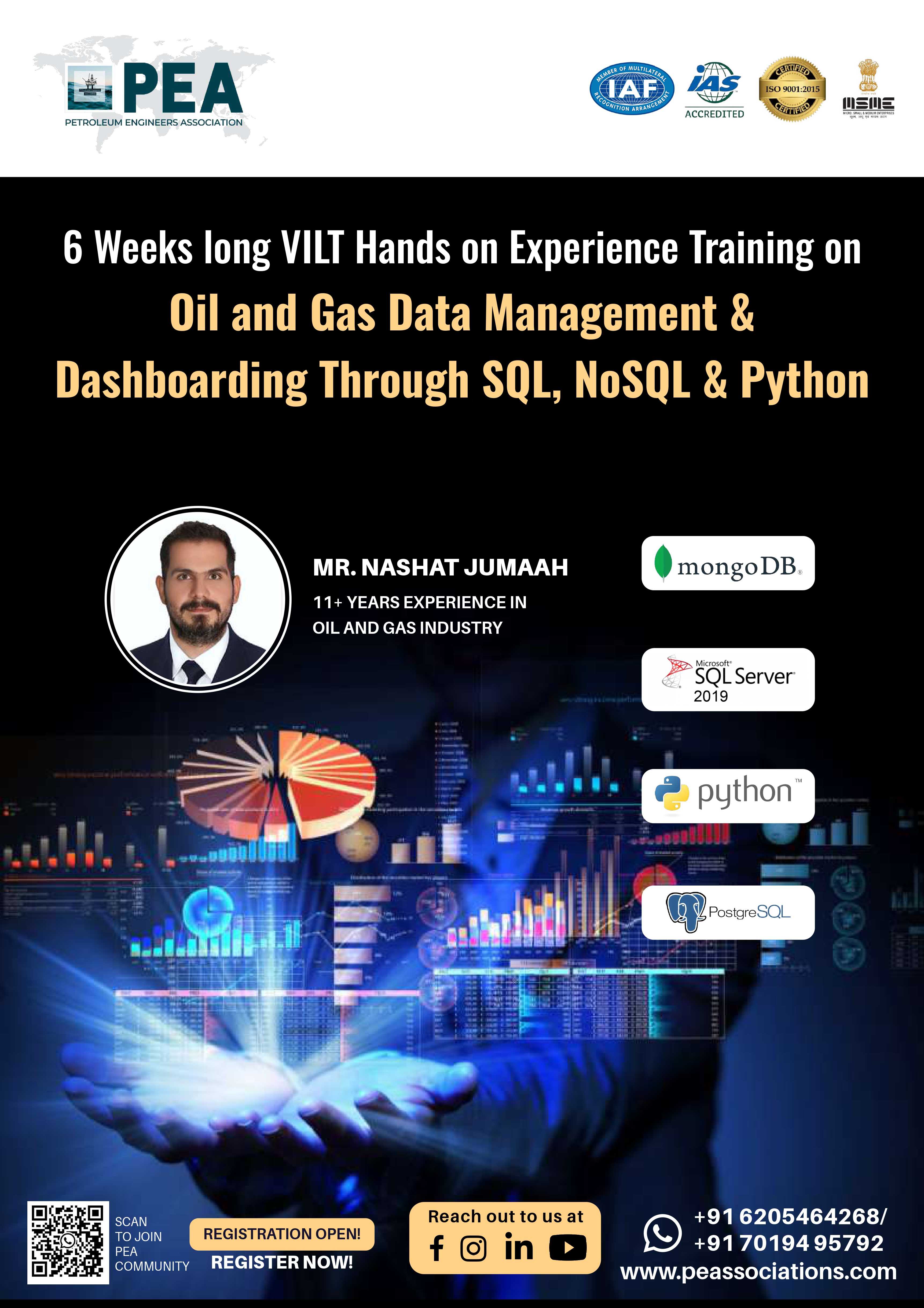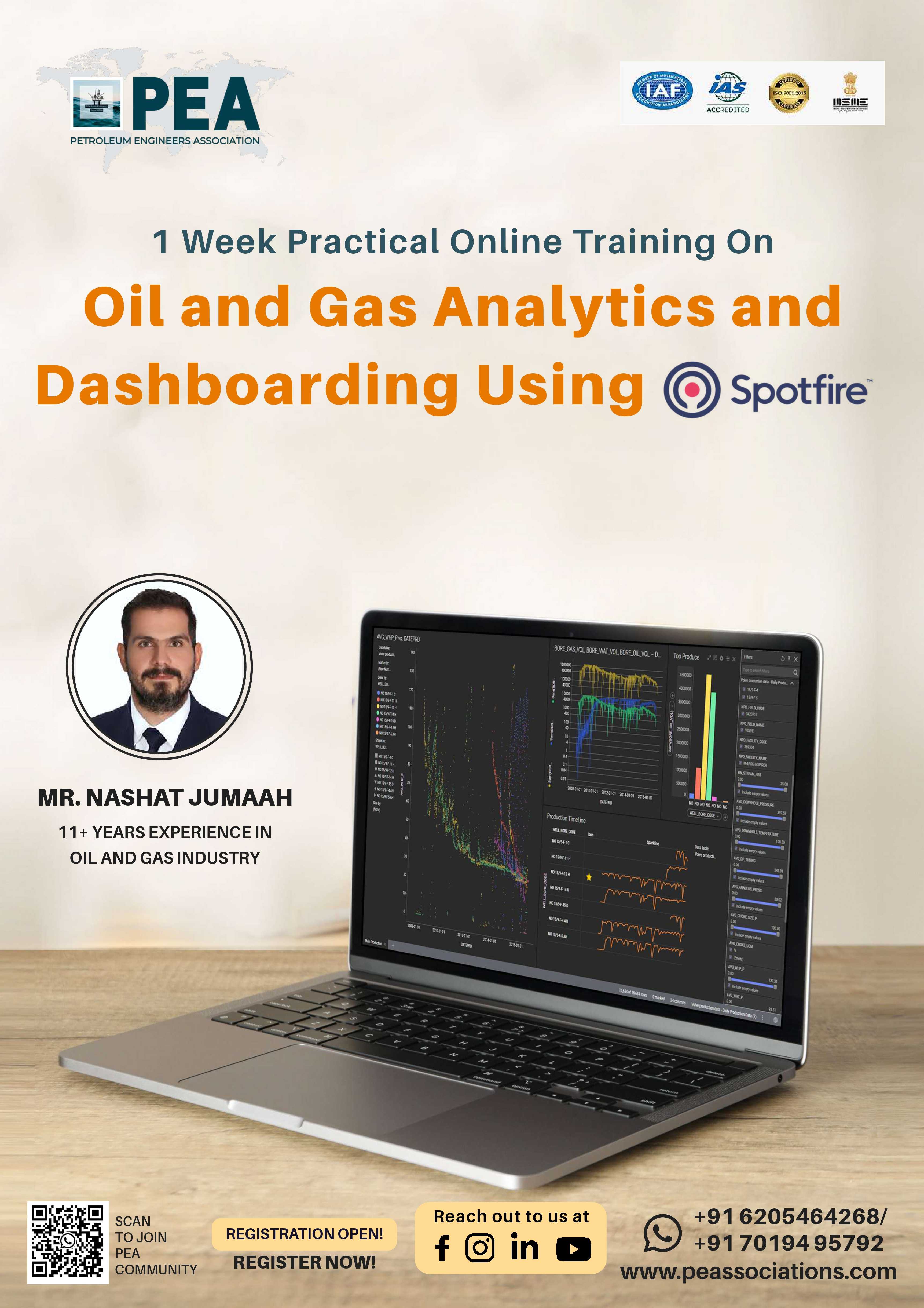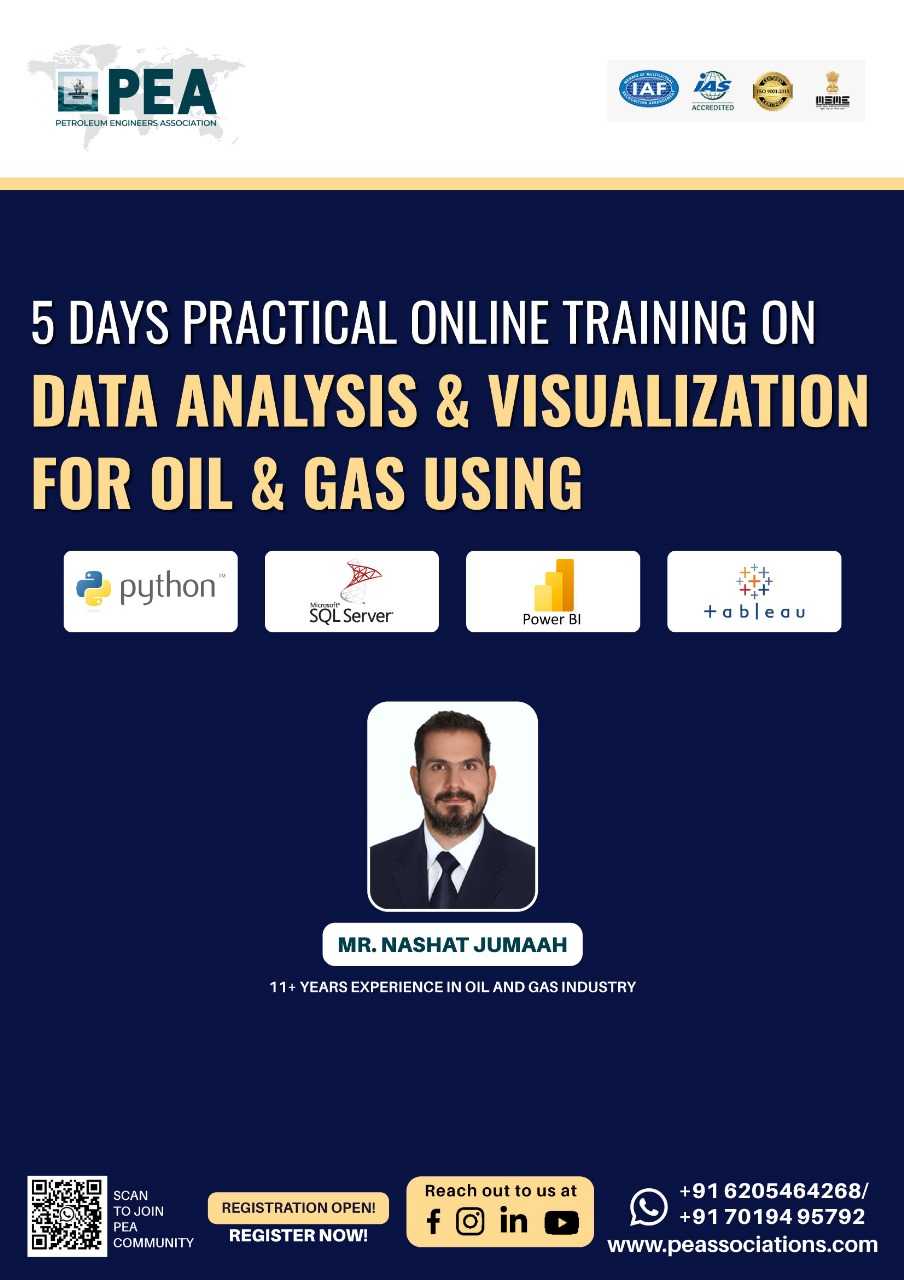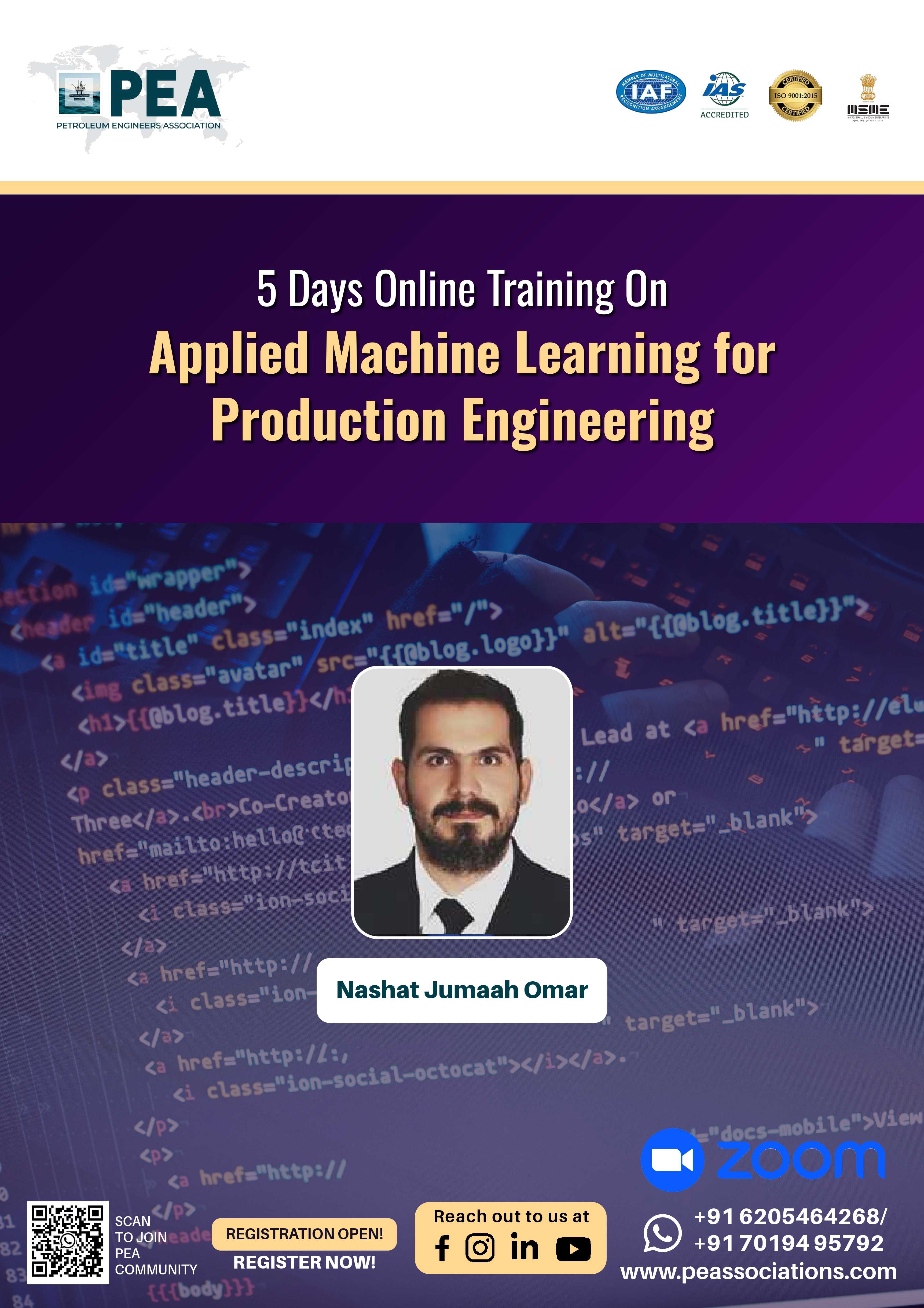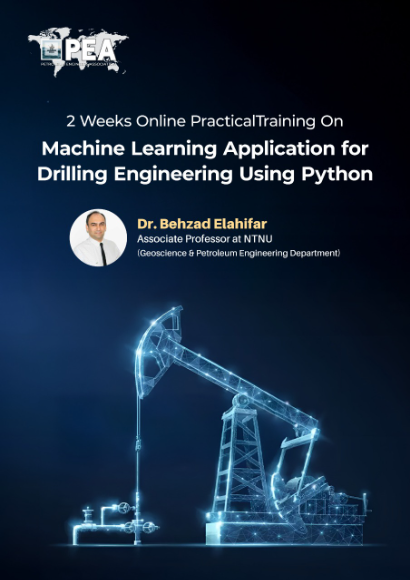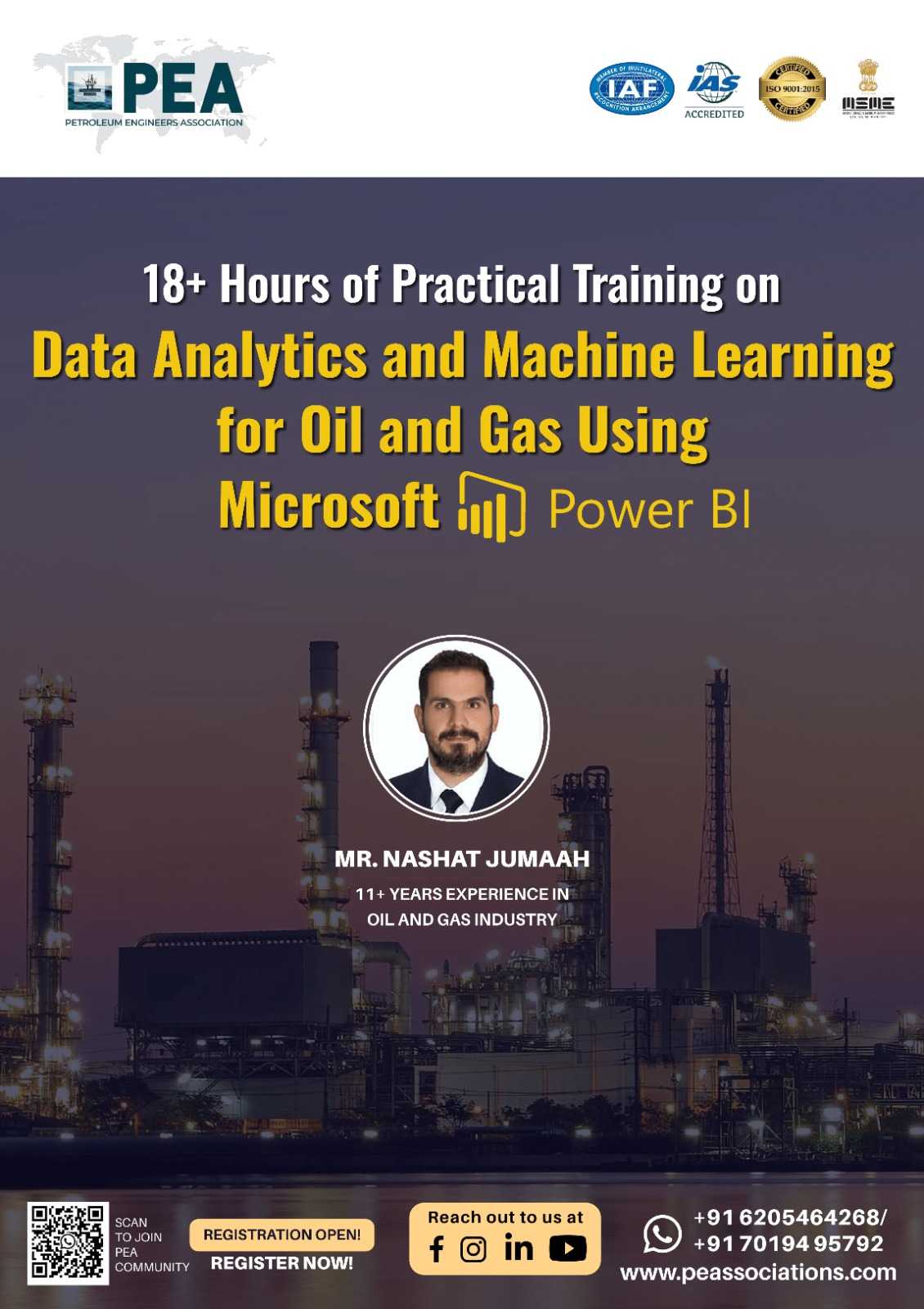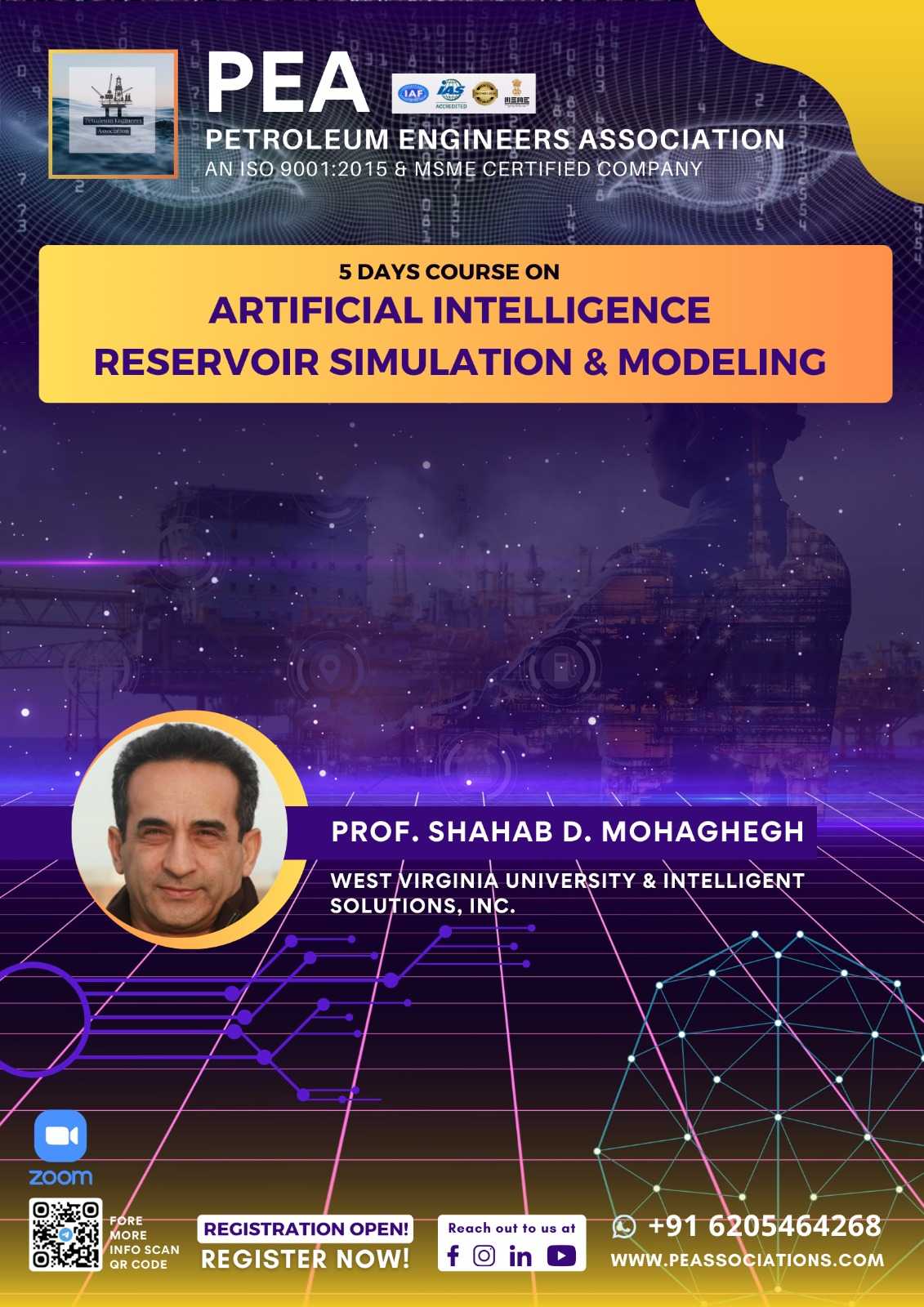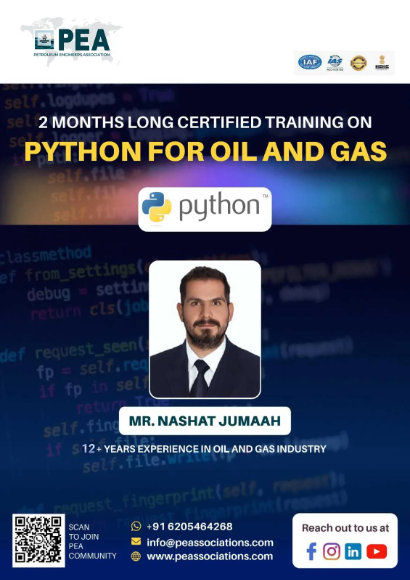Applied Machine Learning for Upstream and Subsurface Domains
| Code | Date | Time | Duration | Location | Currency | Team of 10 Per Person | Team of 7 Per Person | Early Bird Fee Per Person | Normal Fee Per Person |
|---|---|---|---|---|---|---|---|---|---|
| PEA-USML-26 | 19 - 30 Jan 2026 | 9:30 PM Indian Time |
2 Hours Per Day
|
Zoom Online
|
USD
|
900
|
1000
|
1250
|
1500
|
The classes will be via zoom online from monday to friday with 2 hours / day.
Boost your team's skills and your budget! Enjoy group discounts for collaborative learning. Send an inquiry to info@peassociations.com.
Applied Machine Learning for Upstream and Subsurface Domains
A comprehensive 25-hour online training program designed to equip oil and gas professionals with practical machine learning skills using Python. The course covers essential data analysis techniques including clustering, classification, regression, and time series analysis specifically applied to upstream and subsurface operations.
Description
This intensive machine learning training program is specifically designed for reservoir engineering and upstream domains, offering comprehensive coverage of ML implementation in production engineering and production monitoring. Delivered by an industry expert with over 12 years of experience in oil and gas operations, production, flow assurance, and Python programming, the course emphasizes hands-on learning with real oil and gas datasets.
The program spans 25 hours of online instruction delivered through Zoom, structured across three main modules covering Python fundamentals, production engineering applications, and reservoir engineering techniques. Participants work with diverse datasets from actual oil and gas operations, ensuring practical relevance and immediate applicability to their professional roles.
The energy industry increasingly relies on data-driven decision making to optimize production, reduce costs, and improve operational efficiency. Machine learning has emerged as a powerful tool for analyzing complex subsurface data, predicting production trends, and identifying operational anomalies. This training program bridges the gap between traditional petroleum engineering approaches and modern data science methodologies.
Upon completion, you will be able to:
Format: A 25-hour live online training program delivered via Zoom.
Empower your team to:
As a participant, you will:
This course is ideal for a range of upstream professionals and students. No prerequisite knowledge is required.
Reservoir Engineers
Production Engineers
Chemical Engineers
Drilling Engineers
Geologists and Petrophysicists
AL and Workover Engineers
Undergraduate Students
Day 1
Topics:
A gentle introduction to Python Programming Language
Data types and structures in Python
Introduction to Data Visualization
Working with Tabulated Data using Pandas
Basics of Data Cleaning and Transformation using Pandas
Creating Calculations and Data Exports
Linking Excel, CSV, TXT to Python
Exercises:
Oil and Gas data reading and Excel connection to Python
Simple reservoir data visualization
Filtering reservoir data based on wells (single or multiple)
Cleaning and organizing historical data with proper datetime conversion
Day 2
Topics:
Introduction to Clustering
Understanding Distance Metrics
Introduction to Scikit-Learn Library for ML
Anomaly Detection Techniques
Exercises:
Clustering water production data
Detecting anomaly in production data
Day 3
Topics:
Introduction to Classification
Voting and Decision Trees
KNN Method
Decision Tree and Random Forest
Python Plotting Techniques
Exercises:
Classifying ESP operational problems
Predicting flow regime type
Day 4
Topics:
Introduction to Continuous Data and Relationships
Visualization & Correlation Matrix
Regression Analysis
Linear Regression Fundamentals
Support Vector Regression (SVR)
Xtreme Gradient Regression (XGBoost)
Exercises:
Training ML to behave like PROSPER software
Predicting hydrocarbon properties using ML
Day 5
Topics:
Introduction to Time-Bounded Data in Oil & Gas
Decline Curve Analysis (DCA) and Limitations
Introduction to Time Series Analysis (TSA)
Time Series Data Patterns & Components
Exercises:
Predicting shale production decline using AR models
Predicting water cut based on WHP, Qo, Qg
Day 6
Topics:
Python Programming Refresher
Data Types and Structures
Visualization with Pandas
Data Cleaning and Transformations
Exporting Data
Exercises:
Manipulation and analysis of production, reservoir, and petrophysical data
Day 7
Topics:
Introduction to Unsupervised Learning
Clustering Concepts
Distance Metrics
Scikit-Learn for ML
Anomaly Detection Methods
Local Outlier Factor with Time Window
Exercises:
Clustering petrophysical data
Anomaly detection in production data
Dashboarding for clustering and opportunity identification
Day 8
Topics:
Introduction to Supervised Learning
Data Types & Classification
Labels and Events in Oil & Gas
Decision Trees & Related Algorithms
Pandas DataFrames for Classification
Binary & Multiclass Classification
Decision Maps
Exercises:
Classifying formation layers from well logs
Predicting asphaltene deposition possibility
Rock type identification using mineral analysis
Day 9
Topics:
Continuous Data & Correlations
Linear Relationships
Regression Techniques
Linear Regression
Support Vector Regression
XGBoost Regression
Exercises:
Training ML as a numerical simulator
Predicting PVT properties
Predicting water cut from KPIs
Predicting petrophysical properties from LAS files
Day 10
Topics:
Time-Bounded Data in Oil & Gas
Decline Curve Analysis vs Time Series Analysis
Time Series Data Patterns
Simple & Exponential Moving Averages
AR and ARIMA Models
Exercises:
Predicting oil decline using AR models
Predicting water cut from WHP & oil rate
Multi-well data fitting with AR models
Reservoir pressure forecasting
On successful completion of this training course, PEA Certificate will be awarded to the delegates.

Mr. Nashat J. Omar With over 12+ years of specialized experience in petroleum engineering, focus on production and flow assurance brings valuable expertise to the energy sector.
He possess a strong command of Python and C#, which empowers him to create efficient data management solutions and streamline workflows.
His collaborative nature and adaptability enable him to thrive in multidisciplinary settings, where he consistently contributes to success through innovative problem-solving.
He is dedicated to continuous learning and staying ahead of industry advancements, ensuring that he can enhance operational efficiency and guarantee robust flow assurance.
Frequently Asked Questions
All course bookings made through PEA are strictly non-refundable. By registering for a course, you acknowledge and accept that all fees are payable in full and are not subject to refund under any circumstances, including changes in personal or professional commitments or partial attendance.
PEA reserves the right to make reasonable adjustments to course content, trainers, or schedules where necessary, without entitling delegates to a refund. Comprehensive details of each course — including objectives, target audience, and content — are clearly outlined before enrolment, and it is the responsibility of the delegate to ensure the course's suitability prior to booking.
For any inquiries related to cancellations or bookings, please contact our support team, who will be happy to assist you.

